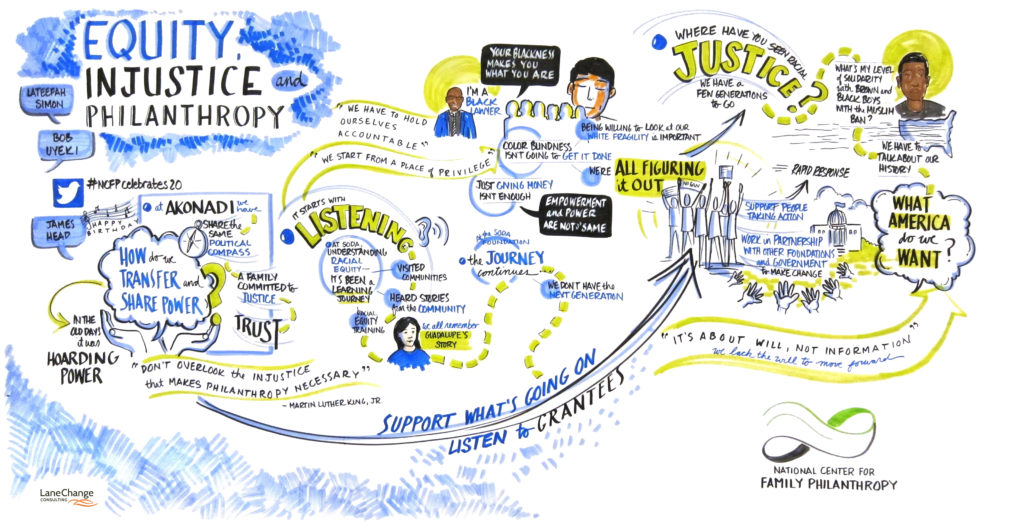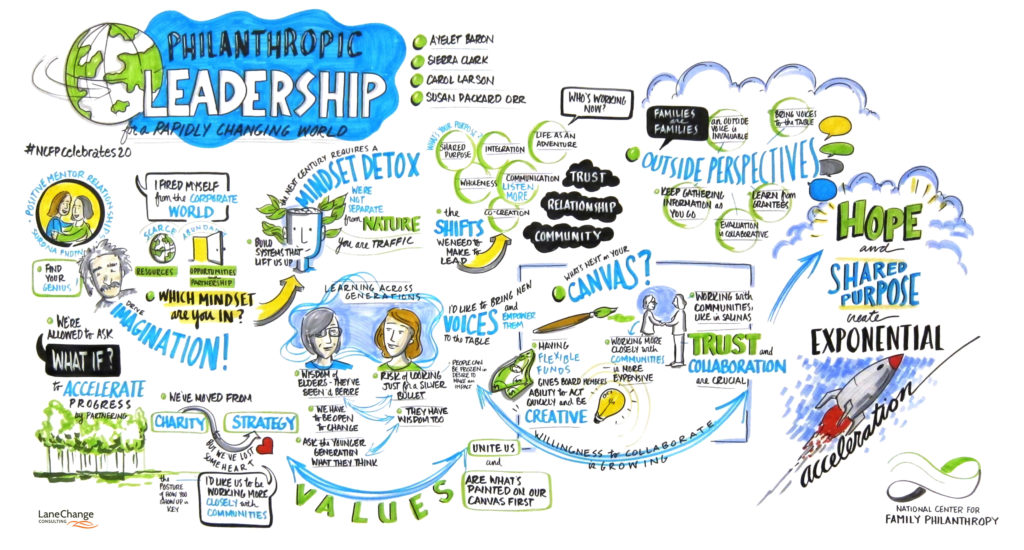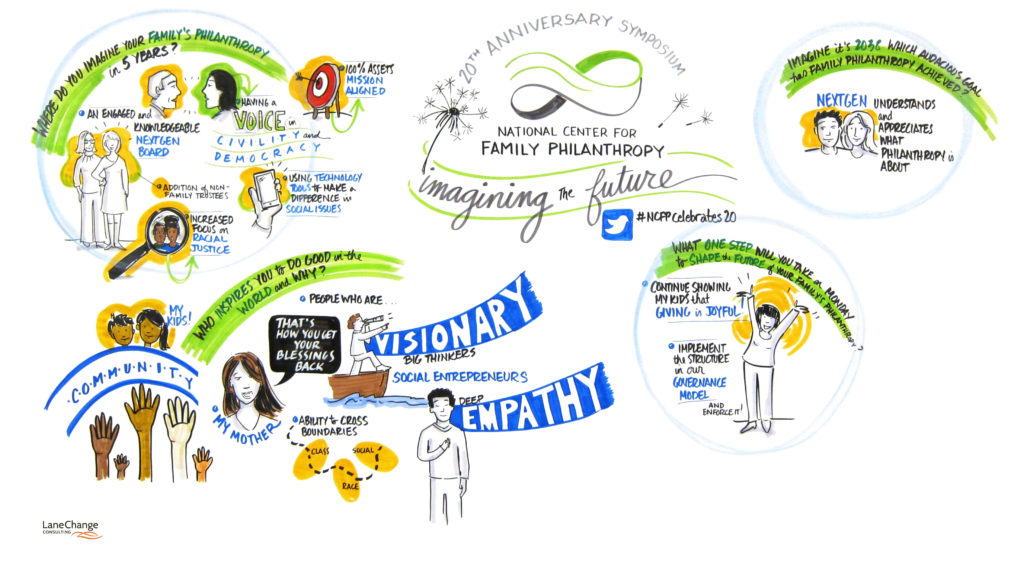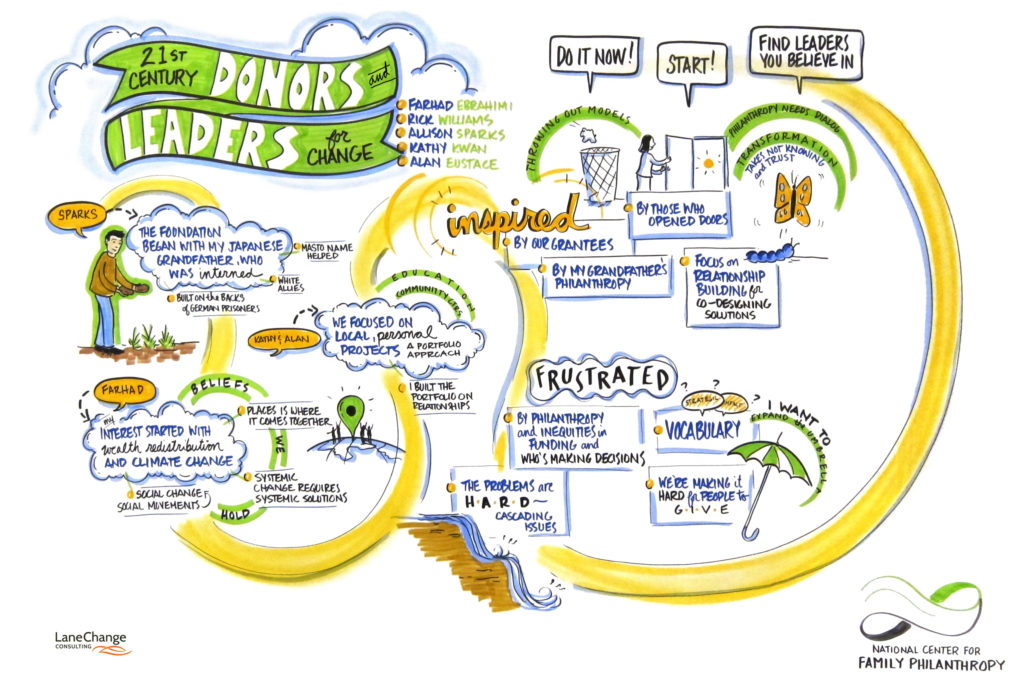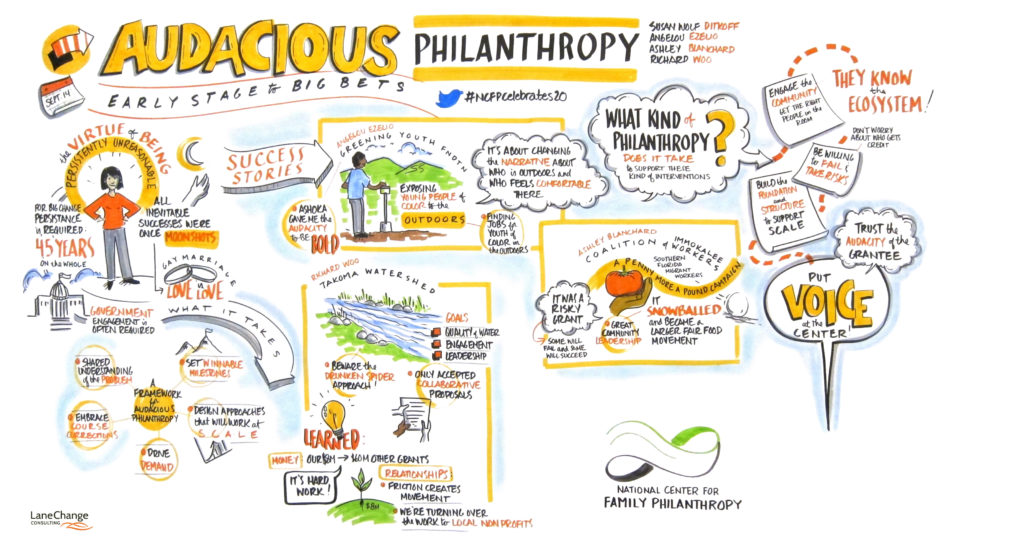Imagining the Future of Family Philanthropy: Themes from Nationwide Focus Groups
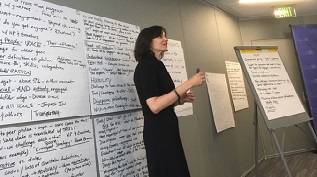
As part of its 20th Anniversary, the National Center for Family Philanthropy held a year-long exploration of themes and trends in family philanthropy. This involved convening 17 focus groups around the country. These focus groups were comprised of a wide variety of family foundation representatives, including founding donors, next generations, trustees, and professional staff. The groups also included professional advisors and representatives from community foundations and regional membership associations.
The themes that emerged from these gatherings were instrumental in setting the agenda for NCFP’s 20th Anniversary Symposium: Imagining the Future of Family Philanthropy, held September 13-14, 2018, in San Francisco. They will also help inform the work now starting on Trends 2020, the update to NCFP’s 2015 Trends in Family Philanthropy, the first national benchmark survey of family foundations.
Here are the major themes gleaned from the Imagining the Future focus groups:
Theme 1: Family Philanthropy’s Role in Building Community in the 21st Century
- There is a role for philanthropy in advancing civic health.
- Philanthropy can foster civic engagement in a time of rancor and divisiveness.
- Philanthropy can bring healing, solutions, and prevention to communities in crisis.
- Donor families can be conveners when government or business is not the ideal broker.
- Conversations and strategies need to be inclusive and consider gender, sexual orientation, disability, generations, race and ethnicity.
- The social compact between philanthropic families and grantees is changing.
Theme 2: Family Philanthropy and Racial Justice
- As we explore the theme of “Building Community,” we must also consider the question of who are left behind and not included in community conversations.
- The American future includes an increasingly diverse citizenry and growing wealth disparity and income inequality. The impact is particularly evident in racially- and ethnically-diverse populations.
- Private foundations, including family foundations, have been traditionally white-led and white-governed organizations.
- Foundations should consider their responsibility to engage all communities in their work, process, and decision-making.
- Many philanthropic families are attempting to address issues of racial injustice in some aspect of their work.
- Donor Advised Funds may represent a more diverse community of donors and offer lessons to the foundation donor community.
- While compelled to advance racial justice, the philanthropic community must approach the issue with candor and integrity in order to be credible and effective.

Surdna Foundation and NCFP Board member Kelly Nowlin facilitates the April 2018 Imagining the Future focus group in Boston.
Theme 3: Expectations of Family Philanthropy Given a Shifting Government Agenda
- In the Reagan years, philanthropy had to wrestle with a changing government agenda and the expectation to be the social “safety net.” The sector should learn from the unrealistic expectations that set in motion. Similar forces are at work again and foundations should examine which priorities or practices need to shift.
- Philanthropic families are evaluating how to plan for shifts in government priorities.
- Some walk away from public-private partnerships in frustration.
- Some double down on funding think tanks, policy groups, and movement-building organizations, hoping to ride out those shifts.
- Certain program areas are particularly vulnerable: environmental issues and women’s health among them.
- There is a growing, sometimes angry, cynicism about private wealth, including private philanthropy, where the decision makers are not readily apparent and accessible. The implications include that foundation should tell their stories, and the stories of their grantees, more compellingly and less defensively. The goal should to enhance public understanding of the third sector.
Theme 4: Changes in Philanthropic Practice
- Foundations are exploring how to maximize the resources available to funders.
- How to utilize the “other 95%” of assets to achieve results
- Impact Investing
- New philanthropic vehicles
- There is a trend to more foundations considering spend down mode.
- Foundations are re-thinking long-held theories of grantmaking.
- Funders have often espoused a “three and out” mentality. They have not wanted grantees to grow dependent on their funding. Some funders now question whether this strategy creates meaningful and lasting change.
- More foundations are supporting capacity building for nonprofit partners. More funders are questioning the practice of funding only special project grants instead of general operating support.
- There is increased interest in finding more effective ways to fund in times of crisis.
- Funders are exploring what “impact” really means, including implications for funding, grant cycles, assessment, and evaluation.
- Funders are increasingly addressing issues of accountability and openness.
- While there are legitimate expectations of privacy, there are also public obligations inherent in private philanthropy options.
- The real and perceived lack of transparency contributes to public cynicism about private giving. Legislative options to restrict practice or require more reporting could be on the horizon.
- New technologies influence philanthropy’s internal and external practices.

Panelists at the opening plenary for the NCFP’s 20th Anniversary Imagining the Future Symposium in San Francisco.
Theme 5: The Future of Philanthropic Leadership
- The new generation of philanthropic donors and inheritors often have different values and priorities from their predecessors.
- The current generation of leadership may be both excited and nervous about passing the family’s charitable legacy on to Next Gen.
- The expectations from new wealth donors are uncertain.
- There must be new ways to encourage more people of wealth to give.
- Funders have largely been independent in their giving. While collaboration is encouraged, the evidence is unclear whether collaborations are really tackling big, systemic problems.
- Many funders speak of feeling isolated. There should be more opportunity to share experiences and reach out to others who share priorities, geography, and values.
- The field should do more to engage diverse donors, regardless of the giving vehicles or institutions they have chosen.
- Evidence suggests that many families work more nimbly and joyfully than other philanthropic institutions. That sense of joy can inspire more giving and more effective philanthropy and embrace a larger community of donor families and their grantees if the stories of family philanthropy are well told.
Imagining the Future: Graphic Sketches
Finally, the themes discussed at the Symposium were beautifully captured by sketch artist Nevada Lane.

